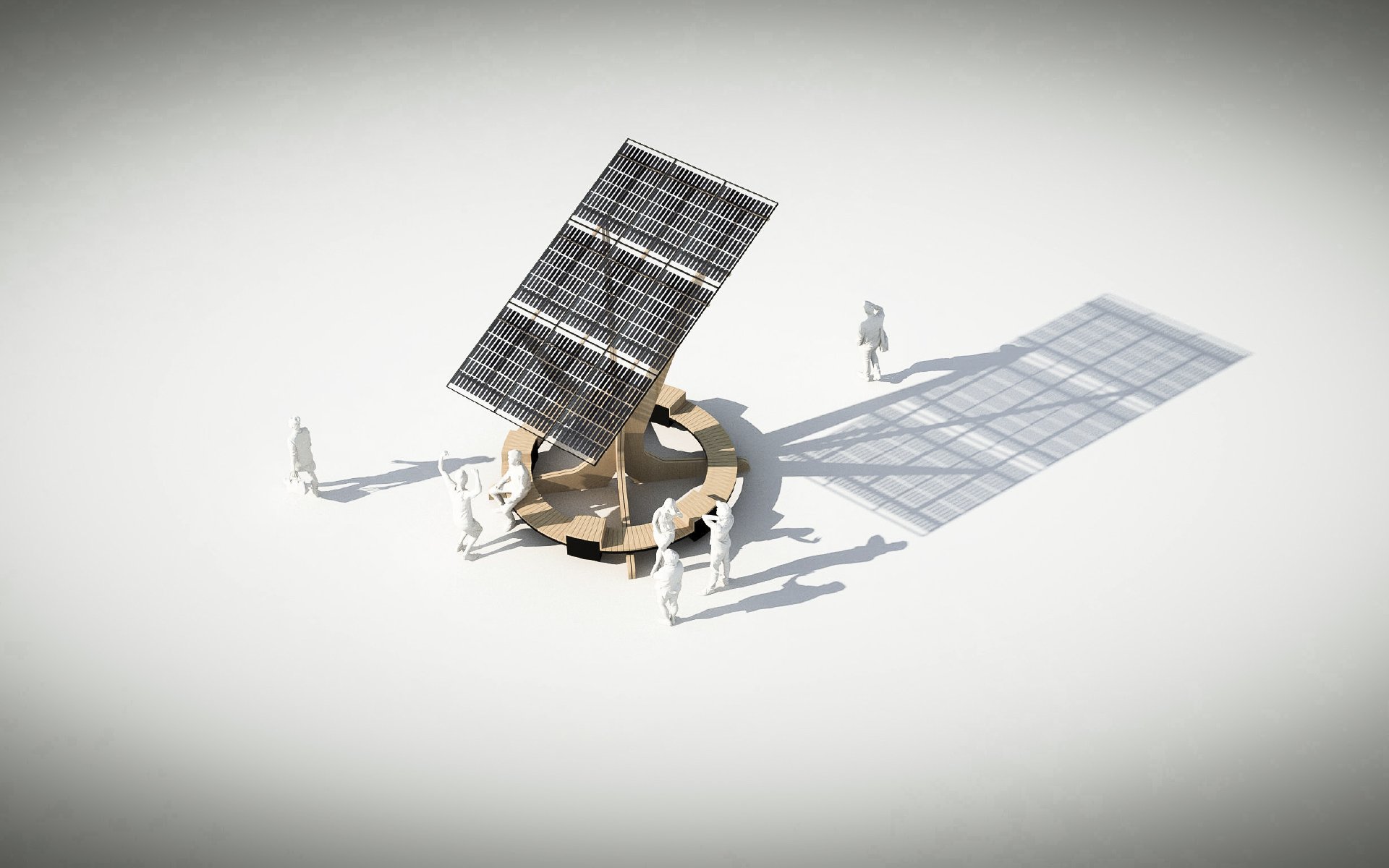
Sun mobility
How to offer solar panel charging to people on the move?
TYPE OF PROJECT: Solar power pavilions
LOCATION: Oslo (Oslo S, Akerbrygge og Frognerparken)
CLIENT: Møller Solenergi
COLLABORATORS: Timber, Multiconsult, DIFK and the City of Oslo
STATUS FOR PROJECT: Prototypes completed in July 2017
With the solar panel project SunMobility, Oslo became the first capital in Europe to offer e-bikes charged with solar power. The solar panel pavilions SunMobility Cube and SunTree deliver green power to people on the move. The project arises from new ways of thinking about urban mobility, and is an example of a greener, emission-free and sharing-based mobility.
Initially, Møller approached A-lab with an aim of making a solar powered carport for e-cars. However, as the architects, engineers, solar panel experts and carpenters sat down together, ideas began to flourish, and all of a sudden, the scope of possibility was widened. Thanks to a visionary client, the project centered around mobile units that could offer solar panel charging of everything from e-bikes to phones and electic grills instead. Hence, the project developed from a private service to a public contribution to both green mobility and green power. The City of Oslo was a partner in this project, although not financially.
Power and Environmental Impact
SunTree
Daily energy production:
12 kWh charging capacity per day (July, average)
18 kWh charging capacity per day (July, cloud free)
Power source: the sun
SunCube
Daily energy production:
12 kWh charging capacity per day (July, average)
18 kWh charging capacity per day (July, cloud free)
Power source: the sun
The SunMobility project involves a series of prototypes of SunCube and SunTree that were placed on different locations around Oslo during the summer of 2017: on Jernbanetorget, Aker brygge and in Frognerparken. Each charging station has four outlets and eight charging cables suited for different mobile units. All of the electricity is produced by the solar panels on top of the installations.
«We design our best projects when we collaborate with clients and partners who have the same goals and values as we do; it gives the projects a sense of direction. Sustainable mobility and social hubs are goals that we try to reach in our projects, and Møller has social responsibility and the environment high up on their agenda.»
Julie Sjøwall Oftedal, partner and Head of Strategy and Development of A-lab-
«If we are going to be able to make the green shift that everybody is talking so much about, we need collaborations between private businesses and the city. That is why this was an especially fun effort.»
Mayor of Oslo Marianne Borgen
SunTree was designed as an urban social hub where you can charge everything from mobile phones to computers, to electric grills, guitar amplifiers or food trucks. The solar panels make up the crown of the tree, while a circular bench forms a ring around the trunk, inviting you to take a break while your phone is charging. The solar panels move with the sun, giving them the added effect of casting shadows over the bench as the sun travels across the sky.
Since a bike stand does not have enough surface area to put e-bike charging solar panels on it, a pavilion with a solar panel roof was designed. The pavilion concept has been given a modern design, where the twisted and angled walls in an otherwise cubistic shape constitute the decorative element.
The Møller Group has great visions of influencing the development of green mobility for the future. For instance, their aim is to stop selling fossil-fueled vehicles by 2025. The idea of replacing e-bike charging with solar panel charging came from the client itself. And with Mobility Cube, they took a step further, making the facility public by renting out solar panel powered e-bikes.
The pavilion emerges as a social hub where you can sit sheltered from the weather and the wind. Replacing dense walls with transparent glass panes renders the construction transparent, and the activities on the inside become part of the street life on the outside.
The different elements of this concept may be interconnected as shown here, where a charging station for e-bikes is connected to a SunTree that is harvesting solar power from the crown of the tree.
The rechargeable tree can be moved around the city and meet different needs whether it is placed on a city square or in a park where people are barbecuing.
Fun-fact
With SunMobility, Oslo became the first city in Europe to offer e-bikes charged with solar power.
The rent for the solar charged e-bikes were 1 NOK (0.1 Euro) per minute.
A SunTree can charge around 1500 phones each day.
On a sunny day one SunTree can power an electric grill for 9 hours.
The solar panel batteries are also charged on cloudy days.
The solar powered electric grills replace the need for disposable grills and all of the problems associated with them, such as burn marks on the grass and the ground as well as large amounts of non-recyclable waste.















